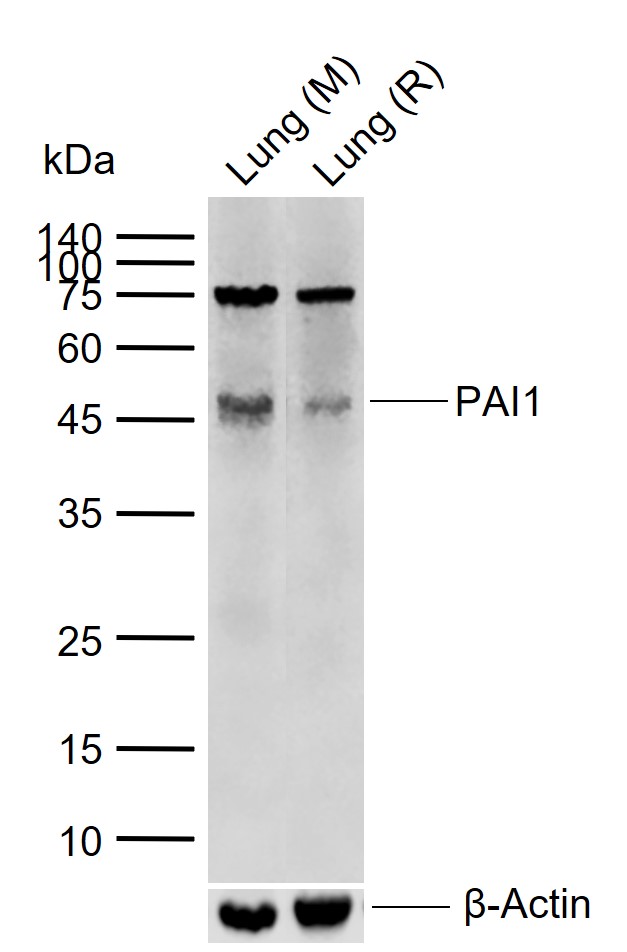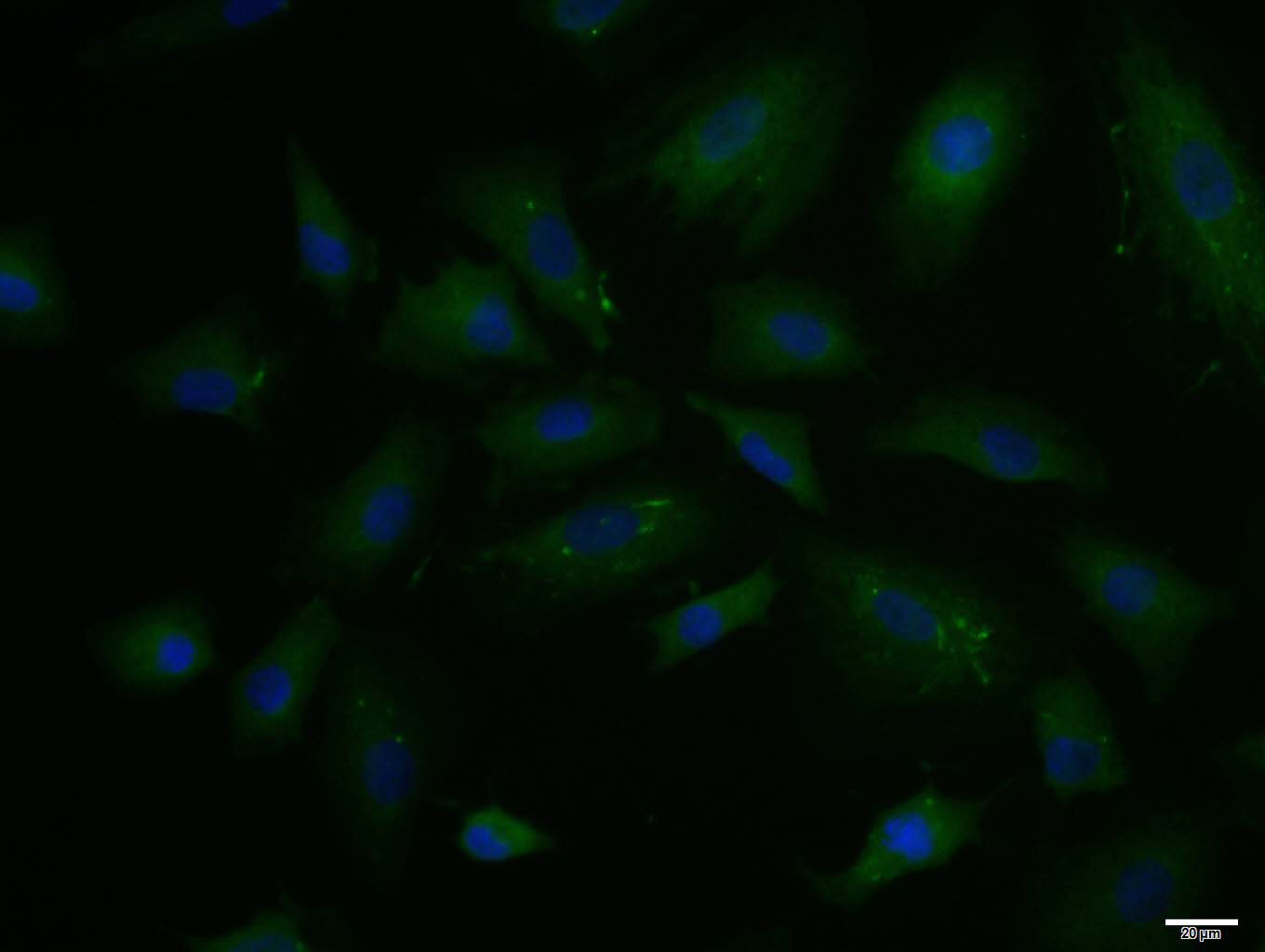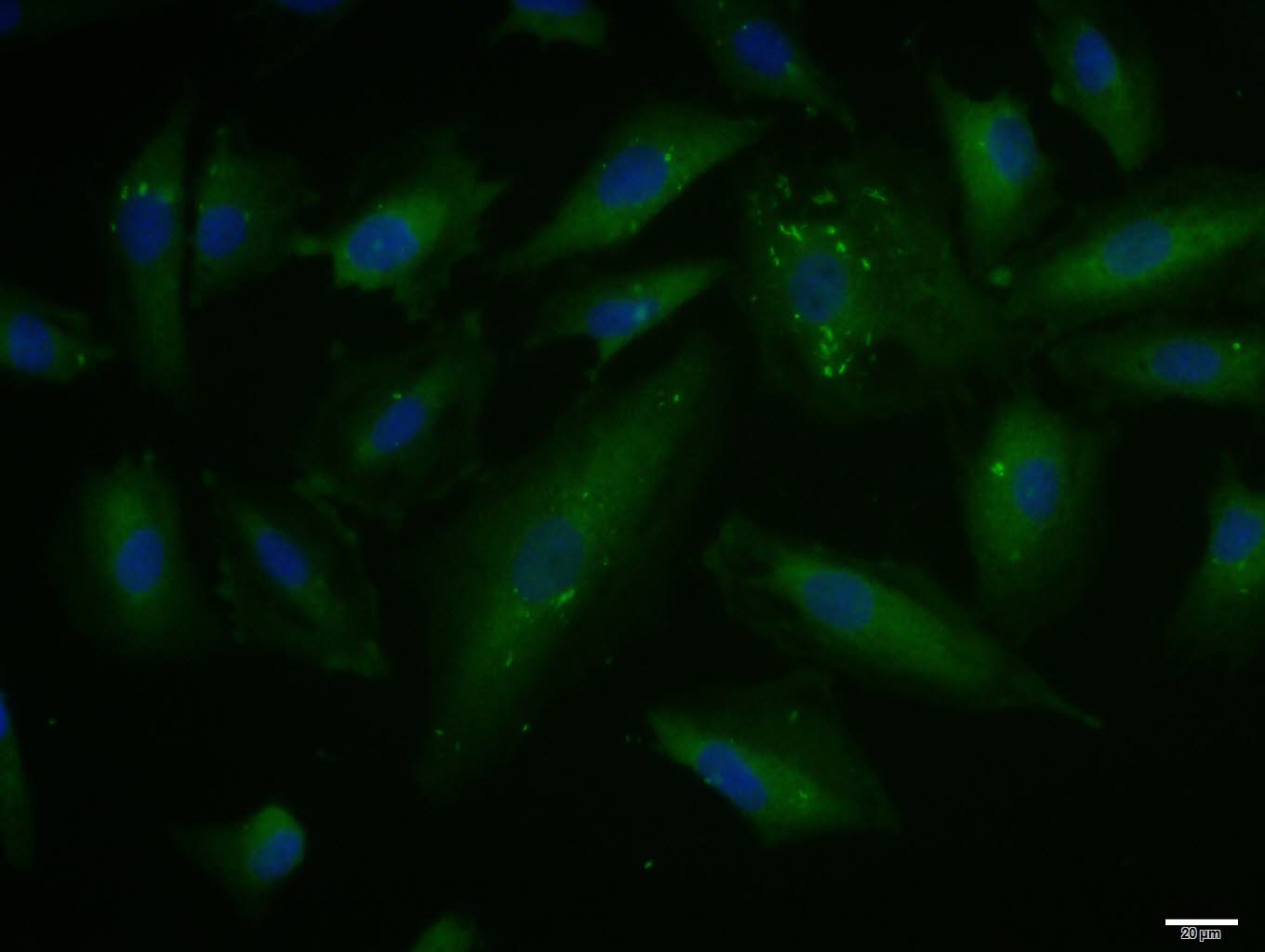
Rabbit Anti-PAI1 antibody
Clade E; Endothelial plasminogen activator inhibitor; Nexin; PAI 1; PAI; PAI-1; PAI1_HUMAN; PLANH1; Plasminogen activator inhibitor 1; Plasminogen activator inhibitor type 1; Serine (or cysteine) proteinase inhibitor; Serine (or cysteine) proteinase inhib
View History [Clear]
Details
Product Name PAI1 Chinese Name 纤溶酶原激活物抑制因子抗体 Alias Clade E; Endothelial plasminogen activator inhibitor; Nexin; PAI 1; PAI; PAI-1; PAI1_HUMAN; PLANH1; Plasminogen activator inhibitor 1; Plasminogen activator inhibitor type 1; Serine (or cysteine) proteinase inhibitor; Serine (or cysteine) proteinase inhibitor clade E (nexin plasminogen activator inhibitor type 1) member 1; Serpin E1; Serpin peptidase inhibitor clade E (nexin plasminogen activator inhibitor type 1) member 1; Serpin peptidase inhibitor clade E; Serpine 1; Serpine1. literatures Research Area Tumour Cardiovascular Cell biology Immunogen Species Rabbit Clonality Polyclonal React Species Human, Mouse, Rat, (predicted: Dog, Pig, Cow, Rabbit, Sheep, ) Applications WB=1:500-2000 ELISA=1:5000-10000 ICC=1:100 IF=1:100-500
not yet tested in other applications.
optimal dilutions/concentrations should be determined by the end user.Theoretical molecular weight 43kDa Cellular localization Secretory protein Form Liquid Concentration 1mg/ml immunogen KLH conjugated synthetic peptide derived from human PAI-1: 301-402/402 Lsotype IgG Purification affinity purified by Protein A Buffer Solution 0.01M TBS(pH7.4) with 1% BSA, 0.03% Proclin300 and 50% Glycerol. Storage Shipped at 4℃. Store at -20 °C for one year. Avoid repeated freeze/thaw cycles. Attention This product as supplied is intended for research use only, not for use in human, therapeutic or diagnostic applications. PubMed PubMed Product Detail PAI1 (plasminogen activator inhibitor 1) is originally cloned from human endothelial cell (Pannekoek 1986, Ginsburg 1986) and rat hepatoma cell 3 cDNA libraries. As a member of the serpin family of serine protease inhibitors, PAI1 inhibits both tissue type plasminogen activator (tPA) and urokinase type plasminogen activator (uPA). High PAI1 levels are associated with an increased risk of thromboembolic disease while PAI1 deficiency may represent an inherited autosomal recessive bleeding disorder.
Function:
Serine protease inhibitor. This inhibitor acts as 'bait' for tissue plasminogen activator, urokinase, protein C and matriptase-3/TMPRSS7. Its rapid interaction with PLAT may function as a major control point in the regulation of fibrinolysis.
Subunit:
Forms protease inhibiting heterodimer with TMPRSS7. Interacts with VTN. Binds LRP1B; binding is followed by internalization and degradation.
Subcellular Location:
Secreted
Tissue Specificity:
Found in plasma and platelets and in endothelial, hepatoma and fibrosarcoma cells
Post-translational modifications:
Inactivated by proteolytic attack of the urokinase-type (u-PA) and the tissue-type (TPA), cleaving the 369-Arg-|-Met-370 bond.
DISEASE:
Plasminogen activator inhibitor-1 deficiency (PAI-1D) [MIM:613329]: A hematologic disorder characterized by increased bleeding after trauma, injury, or surgery. Affected females have menorrhagia. The bleeding defect is due to increased fibrinolysis of fibrin blood clots due to deficiency of plasminogen activator inhibitor-1, which inhibits tissue and urinary activators of plasminogen. Note=The disease is caused by mutations affecting the gene represented in this entry.
Note=High concentrations of SERPINE1 seem to contribute to the development of venous but not arterial occlusions.
Similarity:
Belongs to the serpin family
SWISS:
P05121
Gene ID:
5054
Database links:Entrez Gene: 5054 Human
Entrez Gene: 18787 Mouse
Omim: 173360 Human
SwissProt: P05121 Human
SwissProt: P22777 Mouse
Unigene: 414795 Human
Unigene: 713079 Human
Unigene: 250422 Mouse
Unigene: 29367 Rat
PAI-1是一种单链glycoprotein,其生理作用很多:
(1)与组织型纤溶酶原激活物(tissue plasminogen activator,t-PA)形成1:1的复合物而使t-PA失活;
(2)保护基底膜不被血浆来源的酶所降解;
(3)保护细胞间的接触面而维持组织结构的完整性;
(4)在结缔组织演变、凝血、纤溶、补体激活和炎症反应等过程中具有抑制蛋白降解作用;
(5)在细胞周期中,PAI-1转录水平的变化及其在细胞内的积聚,对细胞形态的维持、细胞与其间质的粘附、细胞增殖、Signal transduction及基因表达等都有重要意义;Product Picture
Lane 1: Mouse Lung tissue lysates
Lane 2: Rat Lung tissue lysates
Primary: Anti-PAI1 (SL1704R) at 1/1000 dilution
Secondary: IRDye800CW Goat Anti-Rabbit IgG at 1/20000 dilution
Predicted band size: 43 kDa
Observed band size: 46 kDa
A549 cell; 4% Paraformaldehyde-fixed; Triton X-100 at room temperature for 20 min; Blocking buffer (normal goat serum, C-0005) at 37°C for 20 min; Antibody incubation with (PAI1) polyclonal Antibody, Unconjugated (SL1704R) 1:100, 90 minutes at 37°C; followed by a conjugated Goat Anti-Rabbit IgG antibody at 37°C for 90 minutes, DAPI (blue, C02-04002) was used to stain the cell nuclei.A549 cell; 4% Paraformaldehyde-fixed; Triton X-100 at room temperature for 20 min; Blocking buffer (normal goat serum, C-0005) at 37°C for 20 min; Antibody incubation with (PAI1) polyclonal Antibody, Unconjugated (SL1704R) 1:100, 90 minutes at 37°C; followed by a conjugated Goat Anti-Rabbit IgG antibody at 37°C for 90 minutes, DAPI (blue, C02-04002) was used to stain the cell nuclei.
Bought notes(bought amounts latest0)
No one bought this product
User Comment(Total0User Comment Num)
- No comment





 +86 571 56623320
+86 571 56623320
 +86 18668110335
+86 18668110335

